Exploring Autism in the Community
Putting together the puzzle pieces for improved awareness
April 16, 2018
Since its designation as Autism Awareness Month in 1970 by the Autism Society, the month of April has been a time of increased acceptance of Autism Spectrum Disorder (ASD) and the unique challenges that those who live with it face everyday. In observance of this month-long celebration and awareness campaign, Eastside decided to tackle all facets of autism at Cherry Hill East, in the district at-large and in the community. Every Sunday in April, more coverage will be added to this package, so please check out Eastside Online throughout the month for a closer look at how autism affects our classmates, fellow community members and people around the globe.
All About the Spectrum
The term “Autism” was first used in 1908 to describe a subset of schizophrenic patients who were especially withdrawn and self-absorbed. American child psychiatrist Leo Kanne later added to this definition in 1943 as children who were highly intelligent but displayed “a powerful desire for aloneness” and “an obsessive insistence on persistent sameness.”
Looking back, neither of these definitions encapsulated the vast complexities of Autism quite right. But, of course, knowledge and scientific discovery were extremely limited back then. Doctors have since come a long way, so much so that we now know that Autism is not a rigid set of conditions. Rather, Autism is best represented by a fluid spectrum of abilities in which no two cases are the same.
To better understand how the spectrum works, explore the various tabs on the interactive spectrum below.
Thinglink by Nafessa Jaigirdar

Why Autism Speaks should not speak for you
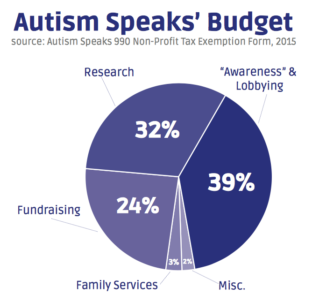
Widely-known Autism Speaks has gained the recognition and support from various schools, organizations, and community events. Its signature puzzle-piece logo has become the symbol for autism awareness all around the world. Hundreds of thousands of dollars have gone into supporting Autism Speaks and their cause, but do you really know where your money is going?
According to the Autistic Self Advocacy Network (ASAN), a very small percentage of the donations goes towards helping people with autism and their families. Only “32% of its budget goes towards research, and an even smaller percentage aimed at improving the quality of life of autistic people. Instead a large majority of the research that Autism Speaks funds is devoted to causation and ‘prevention,’ including the prospect of prenatal testing.” In addition, Autism Speaks’ rates of executive pay are the highest in the world when compared to other autism advocacy groups, with some salaries going well into six or seven figures.
Autism Speaks has also commonly been seen to use damaging and offensive fundraising and advertising tactics in which they portray adults and children with autism as “burdens on society” (ASAN) and devalue the lives of people on the autism spectrum. Until recently, Autism Speaks has targeted most of their funding towards finding a “cure” for autism, considering autism to be a disease to be eliminated. This stigma creates harms within the community as it classifies autism as a disease that needs to be cured rather than recognizing autism as a complex disorder that one out of 68 children in the United States has. This idea on “eliminating” autism distracts from the real goal: bettering life for those with autism and their families. Furthermore, Autism Speaks has only two autistic people on its Board of Directors out of a total of 28.
Despite such faults, Autism Speaks remains to be one of the most popular autism advocacy organizations in the world. Cherry Hill Public School have often been seen to hold fundraisers or events for autism awareness, with the proceeds going towards Autism Speaks. Prevalent mostly in elementary schools throughout the district, schools come together to raise money through various fundraisers and events with proceeds donated to Autism Speaks. Eastside strongly believes that Cherry Hill Public Schools should stray away from supporting harmful groups like Autism Speaks and instead advocate and fundraise for local organizations.

For example, Bancroft is a regional nonprofit provider of programs and services for individuals with autism, intellectual and developmental disabilities and those in need of neurological rehabilitation. Bancroft has many locations established around New Jersey that cover a broad range of topics such as schools and treatment facilities. In addition, local students and adults may volunteer at Voorhees Pediatric Facility (VPS) where Bancroft schools are affiliated with. Such organizations like this allow for both assurance that funding is going to the right cause and a hands on approach to promoting autism advocacy. In addition, self-started groups such as Just 2 Moms accept donations in order to fund programs for school districts that wish to bring Autism awareness and acceptance to their schools.
Eastside commends organizations that have worked to better the autistic community, such as Bancroft and Just 2 Moms, and hopes that groups such as these will continue to gain success in their ventures. However, Cherry Hill Public Schools must take their own steps in alleviating the problem by halting their support of Autism Speaks, and instead work towards supporting local groups and organizations.

Barclay Early Childhood Center Q & A
Photos and Videos by Nafessa Jaigirdar
Q: What is the Barclay Early Childhood Center?
A: The Barclay Early Childhood Program is a comprehensive preschool that services both typically developing and special needs children, ranging in ages from three to five years old. The goal of our program is to provide our students with an exceptional early childhood learning experience.
Q: How many students are in the program?
A: The program services over 350 children, 40% of which are children with special needs.
Q: How are students placed in the program?
A: Our children with special needs are placed in the program through identification, evaluation, and eligibility procedures. Typically developing children (children without special needs) are placed in the program through an application and lottery procedure that begins in February and ends in March of each year.
Q: How do classes work?
A: Our highly trained teaching staff involves the children in numerous activities that focus on developing the following areas: sensory integration, fine and gross motor skills, social skills, cognitive abilities as well as language skills. Teachers and specialists utilize a multi-sensory approach when teaching concepts and skills. Many of our classes also utilize quiet time, circle time (in which students get together to sing songs, read books; the activity changes depending on the day), library time, and recess.
Q: How are teachers and aides prepared for their roles?
A: The teachers at the Barclay Early Childhood Center are NJ State Certified and hold both regular and special education certifications. Our Child Study Team includes a social worker, a learning disabilities consultant, and a psychologist. The teaching staff and specialists, along with the Child Study Team, work as a cohesive team, to best meet the needs of our children.
Q: What is Barclay doing to honor Autism Awareness Month?
A: If you look at the photos in the gallery below, you will notice a set of puzzle pieces taped on the walls. Throughout the month of April, we had faculty and staff members donate to Autism Awareness Organizations. The puzzle pieces are representative of the donations.
IMG_7762 copy from Sonia Kim on Vimeo.

Perspective of Teachers/Aides: What is it like working with kids who have Autism?
If you aren’t one of the students on an Individualized Education Plan (IEP) at East, you likely don’t know about the programs set in place for students with special needs. But for those whose job it is to educate and guide those people, special education is their world.
In honor of Autism Awareness Month, Eastside spoke with teachers and aides throughout the school to get a closer look into what role they play in helping give the best possible education for those with special needs that walk through East’s doors.
One of those teachers is Sarah Cervo, a special education English teacher who has been at East for six years. She spends her days in an inclusion classroom, working alongside a general education teacher to create the best possible learning experience for students of all need levels. These teachers tailor their lessons to accommodate the needs of every teen within their reach.
But how does the IEP process work in the first place?
Typically, the process begins in elementary school. If a teacher suspects that a student may have some sort of learning disability, they speak with the parent and the child undergoes a series of tests. A child study team, consisting of an education assistant, special education teacher, psychologist, guidance counselor and the child’s parents, evaluates each child.
“Based on this evidence, a student is diagnosed with a learning disability or classified under a certain category of learning,” Cervo said.
At the beginning of each school year, there is an IEP meeting, where the plan for each individual student is evaluated, and changes are made if deemed necessary. Some of these students are then taught in specialized education classrooms like the one Cervo teaches in.
Teachers aren’t the only piece of the special needs support network at East. Christine Cox and Ann Tirocke are two of the many education assistants who offer both educational and emotional support.
Cox, who said she struggled in high school, decided to come to East so she can make a difference in the lives of high schoolers today, so they don’t have to suffer in the way that she did.
For Tirocke, her relation to East was slightly different.
“Coming to East was like coming home,” said the Cherry Hill West graduate, who has been working at East since 2006.
A lot has changed throughout the decades in supporting special needs students.When Cox and Tirocke were younger, special needs students were often sent to individualized classrooms. But this method isolates children from their peers, which stagnates development and can lead to social ostracization. Now, their job entails following their students from classroom to classroom to offer academic as well as emotional support. When a teacher explains a lesson in a way that a student does not understand, it’s up to Cox and Tirocke to reiterate the lesson in a way that is comprehensible to their students. They work with kids that range from having learning disabilities such as attention-deficit/hyperactivity disorder (ADHD) or dyslexia to low and high functioning Autism.
In accordance with Autism Awareness Month, these members of the East community advocate for kindness for those who see the world through a unique lens.
“Many people do not know what these students are up against…these kids need to be treated with compassion just like anybody else,” said Cox.
This April, remember that the differences in those who have special needs should be celebrated and understood, not discriminated against.
Perspectives from Students: What is it like to have a sibling with Autism?
Claire Joanson (’19), Claire Tremper (’18) and Arianne Martin (’19) share their experiences with having a sibling with Autism.
Claire Joanson (’19)
My little sister loves to dance. She spends hours twirling through the house, making up new dance routines and carefully recreating performances she sees online. My little sister is also extremely curious. Whenever I’m cooking dinner her head is peeping over the counter, investigating what I’m making her that night, and making sure that I’m aware she’s available to try a bite before dinner time. My little sister is compassionate; she’ll leave little “I love you” notes on my bed showing us holding hands with hearts all around us if she knows I’ve had a bad day. Her smile is never wider than when she is surprising me with a gift she saw at the store and begged my father to get for me. My little sister is sweet, bubbly and happy.
She also has autism. Only one of those facts should impact how you treat her.
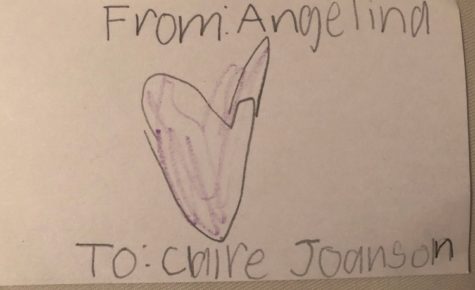
Angelina was diagnosed with autism when she was three years old and not hitting the markers other children her age were hitting. When she was diagnosed I was eleven years old and only knew of autism what I had read in books and seen on television. I remember crying when my parents told me, wondering how my sister would adapt to a world that I knew was unkind to those who were different. Even now, people spew “autistic” or “retarded” as an insult because the idea of someone being unique is so easy to latch onto as a marker of abnormality and so difficult for them to understand. Autism isn’t a death sentence; it’s a complex disorder that makes my sister and one out of every 68 children in the United States unique.
Those with autism deserve to be treated with kindness and compassion, like every other person on the planet. Her obstacles are not faults but stepping stones that have made her one of the strongest eight-year olds I’ve ever met. She’s my little sister, and this Autism Awareness month, I want everyone to know that she’s also my hero.
Claire Tremper (’18)
I am a triplet and my two triplet brothers have autism. I do not desire to keep this information from people because I am embarrassed, it is quite the opposite. When I explain why I am the only one of the three of us who has their license, a job, and goes to a public school, it is a natural instinct for others to offer their sympathy. Although some think that growing up with autistic siblings is sad, I believe it made me the person I am today.
Even with these challenges, I know that they are doing their best and are just trying to get along like everybody else. — Tremper
Ben and Clay above all have taught me the value of love and patience. I remember the first time I realized my brothers were different. New white t-shirts were passed around from student to student for everybody to write their name and a nice message at the end of the year party in first grade. Clay saw the t-shirts and thought it meant that he should get undressed and change into the new shirts. I glanced over to my brother and saw that he was undressing himself for all of my classmates to see. I bolted out of the doors of my classroom, petrified and embarrassed. My mother and father explained to me how Clay’s mind worked differently than mine, and that it did not occur to him that he was doing something wrong. At the age of seven, it is hard to embrace things that are different. However, I quickly realized that Clay did not have intentions to embarrass me, he was simply acting the only way he knew how. That is when I decided that as my brothers’ sister, I would love them and be their biggest supporter.
For me, my life is normal because it is all I know. However, just a glimpse inside my household would look stressful to anybody who has not had many interactions with somebody on the autistic spectrum. I will admit that it is hard to be supportive of my brothers all the time. Just like any other teenager, I want my space and peace and quiet. When my brother, Ben, blasts music or claps for hours on end, I know he is happy, but it gets on my last nerve. Before I had my license, I rarely got anywhere on time because of the struggle it was to pack my brothers into the car just to drive me to a rehearsal or work. Even with these challenges, I know that they are doing their best and are just trying to get along like everybody else.
I want people to know that treating somebody who is autistic with kindness is so important. The amount of people who have been rude or impatient with my brothers breaks my heart. It is not difficult to simply smile at somebody who is clearly different; it means the world to them and their families.
Arianne Martin (‘19)
I recently took a quiz on how much I know about Autism. I did well, but I really had to think about each question. I compared the questions to the experiences of my younger brother, Jimmy. Surprisingly, some of the questions did not relate to my brother at all. I started to think about how different each child with Autism is. Many people I have talked to think that Autism holds certain people back from achieving their goals. However, I have a hard time agreeing with that idea. My brother is truly one of the smartest people I know, and I’m not sure if the Autism affected his intelligence. However, I definitely know that he does not lack brain power because of it.
Autism is just an obstacle, not a complete blockade. Children and adults with Autism can still overcome hardships and difficulties despite any challenges they face. — Martin
Despite obstacles he faces, like social barriers and sensory overload, Jimmy achieves his outstanding goals. For example, Jimmy recently competed in a Special Olympics swim meet where he won first place overall. Autism did not stop him from winning, and it is likely that he will not be stopped in the future from achieving any other goals.
I would like anyone reading this to know that Autism is just an obstacle, not a complete blockade. Children and adults with Autism can still overcome hardships and difficulties despite any challenges they face. With love and support from families and friends, Autistic people can achieve whatever they would like.
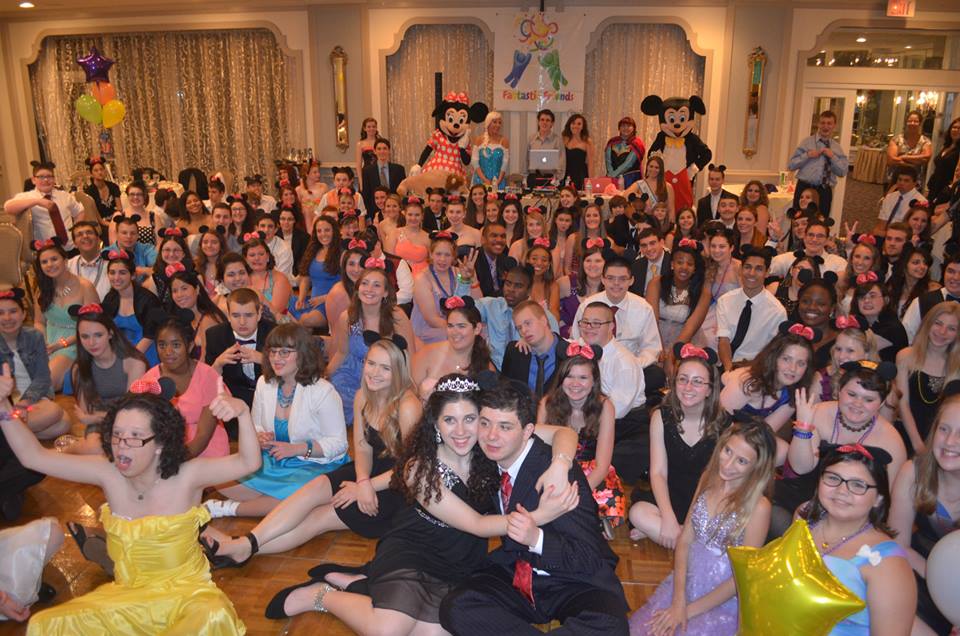
Courtesy of the Fantastic Friend's Facebook Page
Over one hundred people gather for Fantastic Friend’s Disney themed prom.
Programs to support kids with Autism: Fantastic Friends
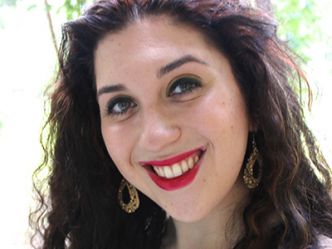
To Marissa Hacker, a 21-year-old graduate from Stockton University and a Cherry Hill native, there is no one more important to her than her twin brother, Matthew Hacker.
Matthew suffers from Autism, and as a result he was often excluded, ignored and emotionally abused throughout high school.
Though Marissa Hacker did not realize this at first, the older she got the more she started to understand just how much of an issue this was not only for her brother, but for all people on the Autism Spectrum. These kids were never quite treated the same as their peers. People would, perhaps even unintentionally, exclude them on what many of us consider to be normal, everyday activities.
“It’s frustrating to see people treat him [Matthew] that way,” Hacker said, “but I know it’s because people don’t know what to do or how to act when they come across someone who is Autistic, has Down Syndrome or other special needs.”
The real turning point for Hacker was the night before her 15th birthday. That night her brother came home crying from a summer camp because he had no friends.
This prompted Hacker, though only in high school at the time, to create the Fantastic Friends: Teens and Tweens Special Needs Social Group, a national organization that provides a welcoming environment for young adults, teens and tweens (ages 13-26) with special needs. Some of these young people have special needs. Some have only limited speaking skills. But in this group, they’re all paired up with other young people for social activities.
The group holds monthly meetings and special events, aiding them in socializing and having fun. And each June, to commemorate a year of new friendships, the organization hosts an annual prom at The Mansion in Voorhees.
Hacker still remembers the first Fantastic Friends event she organized, almost like it was yesterday. “It was a sports day,” she said fondly.
Together, they played wiffle ball and kickball and afterwards, they all went to a local lake and ate pizza as they relaxed on blankets in the sand.
“I wanted Matthew and other teens with special needs to have a place where they could make friends and feel accepted by their peers,” Hacker said. “It’s an organization to bring awareness and unconditional support and love. It’s like being a part of a giant family.”
From completing arts and crafts to dancing the night away at Prom, Fantastic Friends really does give kids with Autism the opportunity to have fun, to interact with new people and to tangentially work on their social skills in a non-threatening environment.
Though the program originated in the South Jersey region, the program quickly spread to other states after Hacker received the Diller Teen Tikkun Olam Award for her leadership in the community. With her newly acquired 36,000 dollar grant, Hacker was able to build seven chapters across the nation, spanning California, New York, Florida, Oregon and Pennsylvania to name a few.
“It’s amazing how much it [Fantastic Friends] has grown,” said Hacker. “There really is a need for it all over the world.”
Ultimately, Hacker’s main goal is to spread awareness. Growing up, she remembers being the only student to ever go out of her way to talk to kids with special needs. This wasn’t because her peers were mean. Rather, this was because she grew up with a brother who had special needs, and knew firsthand the importance of including all kids.
Through Fantastic Friends, Hacker hopes to bridge the gap between those with special needs and those without special needs. She hopes to encourage people to not be afraid to talk to someone new and maybe just maybe, make a fantastic new friend in the process.
DECA: Events for kids with special needs interested in pursuing business
This past week over eighteen thousand high school students, advisors, businesspeople and alumni gathered at the Georgia World Congress Center in Atlanta to partake in the 2018 International Career Development Conference, better known as the DECA Nationals Competition.
The stadium was packed with students; music boomed throughout the convention center and the excitement and passion of the students radiated throughout the air.
With hundreds of competitions and events offered, DECA is one of the largest high school business competitions in the nation.
As such a large organization, they make a conscious effort to cater events towards students with autism and with learning disabilities, so as best prepare all students for a future in the business realm.
Currently DECA offers two events, Supermarket Careers & Customer Service events, for any student with an I.E.P, or an individualized educational plan. More often, students competing in these events are tested on human relations, job interview skills, personal selling, sales presentation, operations and retail math.
Though East is yet to have students compete in these events, Cherry Hill West, on the other hand, had 32 students participate in the Functional/Vocational program in this past year alone.
Of these 32 participants, is Hugo Kim (‘19), a seasoned DECA member. At this year’s New Jersey State Competition, Kim received 2nd place overall in the Customer Service event, thereby qualifying for ICDC.
“I feel very excited after make[ing] finals and winning in my event. My favorite part about DECA is making new friends, socializing and hanging out at the hotel,” said Kim shortly after coming back from the awards ceremony.
Kim was very proud of his accomplishments, and rightly so. According to Ms. Bridget Garrity-Bantle, one of the special education teachers at West, preparing for the regional, state and national competitions is a tedious process. All throughout the year, the students work on money math skills and vocabulary terms that are not only applicable to DECA, but to real life jobs. The students also work in the school store and practice interviewing skills with a variety of teachers, so as to best prepare for the new faces and the new people they will meet at competition.

The competition process is two-fold. The students first complete an online test involving giving change, adding up bills, and applying sales tax as well as supermarket & customer service terms such as Gondola, determining needs, bagger, checker, aisles and markdown. At competition, the students complete an interview with a judge. For the Supermarket Careers event, students are asked basic interview questions for the position of a bagger at a food store and are scored based on their answers. They also complete a timed role-play: bagging groceries. As for the Customer service event, students are likewise interviewing for a position in a department store. For their role play they are asked to sell an item to the judge using the 7 steps of selling. This past year, their challenge was to sell a pair of jeans.
DECA has been such a life changing opportunity not only for Garrity-Bantle, but also for her students.
“DECA has allowed my students to step out of their comfort zones and improve communication skills,” said Garrity-Bantle. “I have seen so much growth with all of my students. Cheryl Melleby and Evelyn Minutolo [West’s business teachers] have opened their arms to our students and it has made such a difference. The students have gained so much confidence through our DECA program.”
Better so, Garrity-Bantle is confident that this is only the beginning for her students. With already so many state qualifiers and national qualifiers, she cannot wait to see where her students will go from here.
This year’s DECA theme was “to go limitless” and Garrity-Bantle agrees: no other theme better encapsulates all that her students have achieved than the word “limitless.”
How programs for kids with Autism differ at Cherry Hill East and West?
Up until about a decade ago, eighth-grade students with autism in the Cherry Hill school district were faced with the reality that their local high school could not offer them the kind of educational support that they needed, according to former District Supervisor of Pupil Services and current East Assistant Principal Ms. Rebecca Metzger.
“We had a group of kids in middle school who wanted to go to their local high school so we developed a program at West…the program was developed at West because that was their…neighborhood school,” said Metzger.
Thus, the program for students with autism at Cherry Hill West was born, a program that has since been recognized highly by the state, according to Metzger.
Students that have more significant needs…are referred to West as part of their individualized education plan because we have the teachers and the programs and the classrooms and the students…there together because it can be very isolating if you’re the only student who has…this type of significant need and there’s not other students around you that are having those same experiences and having those same needs
— Metzger
The program at West is hyper-focused on ensuring that students at all levels of the spectrum are prepared for the wide world that lays ahead of them after exiting the district. Vocational job preparation courses, like West’s ShopWest program – in which students actively manage a supermarket – are an important facet of this. Vocational reading and math classes are also offered. There was even a production of Peter Pan in which students with special needs could act that was organized by one of West’s special education teachers, and some members of West’s DECA team with autism have won awards in the past.
“At West, we have a program that’s designed for students who…need more development of life skills or independent-living skills, or obtaining post-secondary employment, like getting jobs,” said Metzger. “They might have more needs.”
Another option that is available to West students with autism is to stay an extra year in high school before graduation. During this extra year, the student would receive additional help with job preparedness and would also focus on job placement. This way, the student would have a job lined up right out of high school, alleviating a common fear for most families that have students with autism. This option, however, is not commonly employed at Cherry Hill East.
“They have job placements or development out in the community,” said Metzger.
While there are programs for students at East with autism, the district does not have the resources to build East’s program up to the level of West without endangering the overall level of service that the district can provide. Before ninth grade, it is district policy that a meeting be held with parents of children with special needs to determine an individualized education plan (IEP) for that student throughout their high school career. During that meeting, the programs at both East and West are explained, and most of the time, parents and students choose which high school would fit best. Sometimes, however, a family may be referred to West, though they are not required to make that choice.
“Students that have more significant needs…are referred to West as part of their individualized education plan because we have the teachers and the programs and the classrooms and the students…there together because it can be very isolating if you’re the only student who has…this type of significant need and there’s not other students around you that are having those same experiences and having those same needs,” said Metzger.
The services that East offers are geared more toward higher-functioning students with autism. These services include social skills classes, speech classes, and behavioral support, but do not reach into the vocational sphere, like the services at West do. Ultimately, East’s programs
“We teach behaviors that are less noticeable so that a student is better integrated into not only the high school, but also post-secondary life,” said Metzger.
While many stark differences exist between the programs at East and West, there are some prevailing similarities. Both schools try to maximize the interaction students with autism have with their peers, for one. Additionally, both schools offer varying levels of support based on scholastic need, like in-class resource classes, self-contained classes, and resource center classes (better known as Concepts classes). In-class resource classes refer to a classroom environment where a regular-ed teacher teaches in conjunction with a special-ed teacher; self-contained classes refer to a class for students whose performance in a given subject is three or more years below their current grade level – these classes are smaller and are taught solely by a special-ed teacher. Resource center classes are also taught entirely by a special-ed teacher, but are taught more at grade level than self-contained classes. Students with autism at both East and West participate in a wide range of classes from the Honors track to self-contained classes.
“We’re proud of our programs,” said Metzger. “We’re proud of what we do.”
Programs to Supports Kids with Autism: Miracle League
Miracle League strives to make miracles come true for people living with Autism.
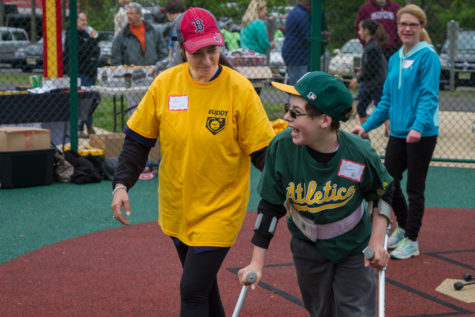
Every Saturday, student volunteers gather at Jake’s Place to play baseball with kids with special needs.
Arthur Aston, the founder of Miracle League, is a firm believer in the idea that “anyone, regardless of ability, can achieve their goals, when given the opportunity.”
And so, with the help of a group of student volunteers, he set out to form Miracle League, a program designed to give people with disabilities the chance to partake in America’s favorite pastime: baseball.
The league is a part of Jake’s Place – a nonprofit dedicated to building all-inclusive playgrounds where both abled and disabled children can play. The program offers both a Minor League as well as a Major League, with children as young as five years old joining in on all the fun.
To play, each participant is first assigned a student volunteer, or rather a buddy. The buddy assists the player with hitting the ball, running to the bases and protecting them in the field. But to volunteers like Hope Seybold (‘19), who has been working with Miracle League for over three years now, the program means so much more.
To me, the most meaningful part of Miracle League is the connections I make with the players. You see them every week, so you start to become friends with them. Besides, the kids and the adults really love doing it, so seeing how happy it makes them is what really keeps me coming back for more
— Hope Seybold
“To me, the most meaningful part of Miracle League is the connections I make with the players. You see them every week, so you start to become friends with them. Besides, the kids and the adults really love doing it, so seeing how happy it makes them is what really keeps me coming back for more,” said Seybold.
Seybold, along with Aliyah Anderson (‘19) currently run the Miracle League Chapter at Cherry Hill East. Prior to the start of the Spring and Fall Seasons, Seybold and Anderson organize a meeting for all interested students. This year’s spring season is set to begin on April 21st and every Saturday after that from 10:00 to 12:00, around 15 to 20 student volunteers will pair off and play baseball. On average, the minor league contains ten consistent players and the major league comprises of anywhere from 15 to 20 players.
But despite its current grandeur, the club is still relatively new. In fact, it was in the spring of 2016 that Hope Seybold, her older sister Holly Seybold (‘17) and Joe Levin (‘17) decided to bring the program to East. And the results of their hard work were a smashing success. The first meeting, alone, boasted well of 90 prospective volunteers.
Now, with the weight of the club left to Seybold and Anderson, they are more than excited to see what this upcoming season has in store.
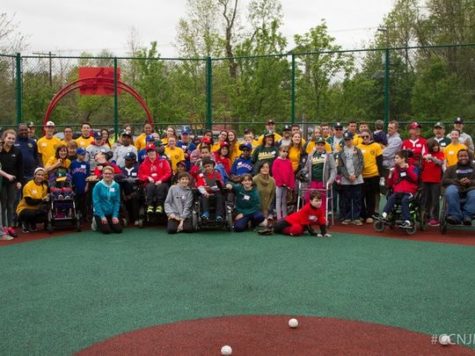
Hope Seybold (’19) organizes students to attend the weekly games at Jakes Place.
“I always look forward to the seasons starting because Miracle League really does mean everything to me,” said Seybold. “It is so important because people with disabilities, whether it be autism or physical disabilities, don’t always have the same opportunities to play on sports teams or to even throw and hit a baseball. Miracle League is able to give them that chance.”
According to the US Census, there are about 12,000 people with disabilities in Camden County. Of the 12,000, 70 are registered to play in the league. Both Seybold and Anderson hope that the percentage will continue to grow in the coming years so that one day everyone can accomplish their dream and maybe even just hit a home run.
How you can get involved: Miracle League first meeting for the Spring Season is set to take place after school on April 13th. If you are interested in helping out, be sure to attend the meeting.
Programs to support kids with Autism: Interact Club
How the Interact Club hopes to raise awareness on ASD
Within the myriad causes East supports with its various drives and fundraisers, autism awareness has been conspicuously absent. The Interact Club, however, along with Assistant Principal Mr. Tom Storer, is endeavoring to change that.
Storer is the Vice-President and Treasurer of the Gloucester County Special Services Educational Foundation (GCSSEF), an organization which, through its funding of the Bankridge Developmental School offers multiple programs to students with Autism Spectrum Disorder (ASD) and their parents, for a total of over 275,000 people served in all. Storer approached the faculty adviser of the Interact Club, Mrs. Debbie Jastrow, with the idea to start an in-school fundraiser for the GCSSEF. Storer also suggested the interact club participate in the organization’s annual autism walk, which occurs in October.
The in-school fundraiser will likely occur at the beginning of the 2018-2019 school year, according to Storer, and will model itself on the club’s candy bar fundraiser earlier this year to support hurricane victims in Puerto Rico.
“”Last year, [Interact club] had their candy sale for hurricane relief…” said Storer. “[Jastrow] thought that maybe she could run that again next year, and maybe donate a portion of that to the autism walk.”
The funds raised from the fundraiser will go to fund some of the extra-scholastic programs offered by the GCSSEF, like parent ‘Fun Friday’ nights — where parents can drop off their kids in a safe environment and go out.
“They’ll have their teachers; they’ll do their activities for two to three hours, and the parents will be able to go out to dinner, or go out and [see] a movie, and do things that they can’t normally do,” said Storer.
The organization also provides trainings for students–and parents of students–with autism.
“A lot of schools in Gloucester County don’t provide educational opportunities and services for kids with autism, sp we [rovide the extra training for them,” said Storer.
Ultimately, Storer and the Interact Club hope to create a community that is more aware of the unique needs of students with ASD while helping to raise money for programs that aid those most affected by it. So keep an eye out for Interact Club’s efforts to aid the GCSSEF next fall and beyond. )
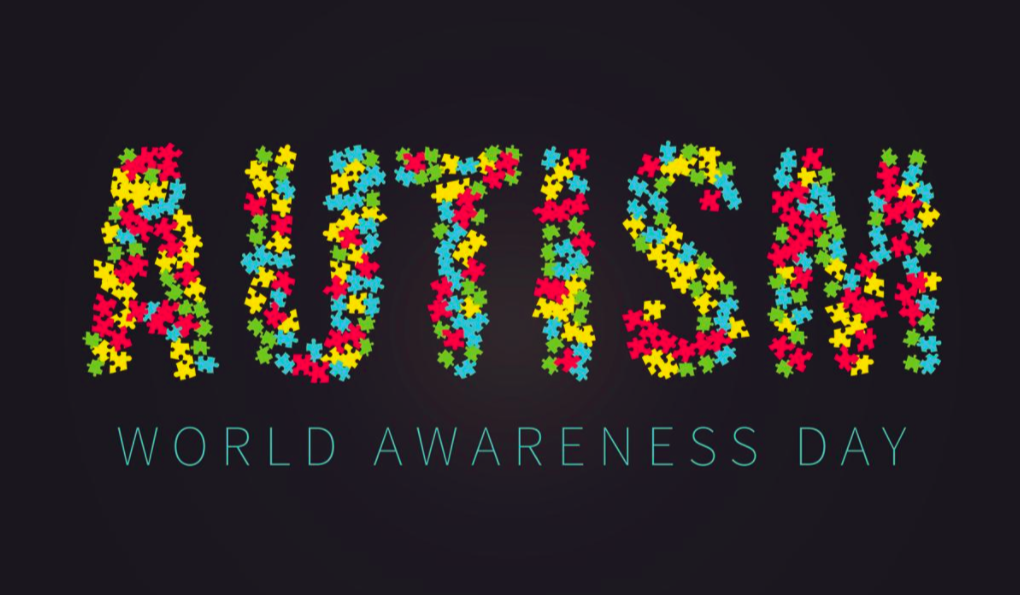

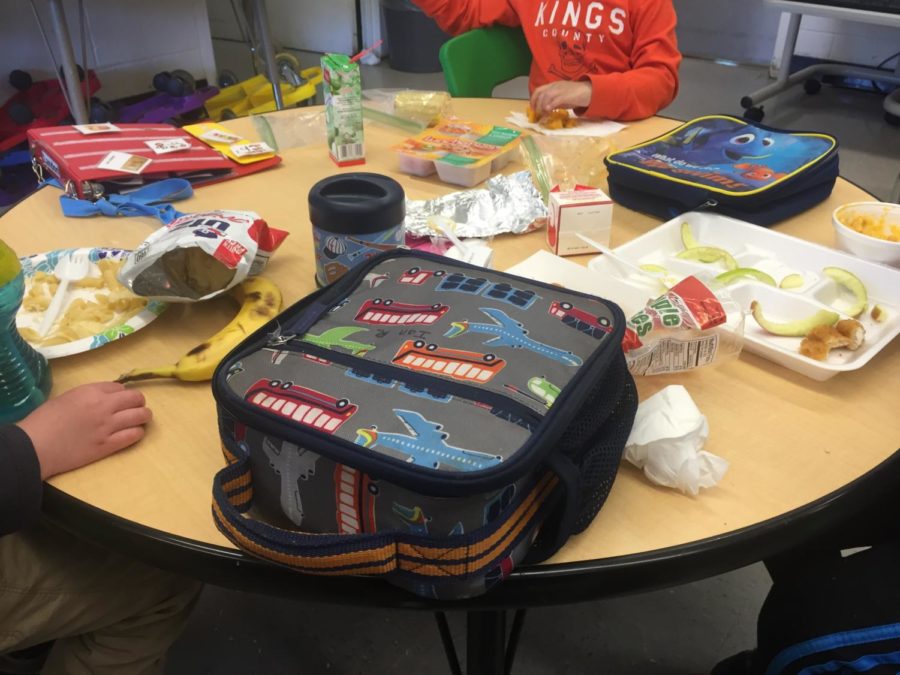
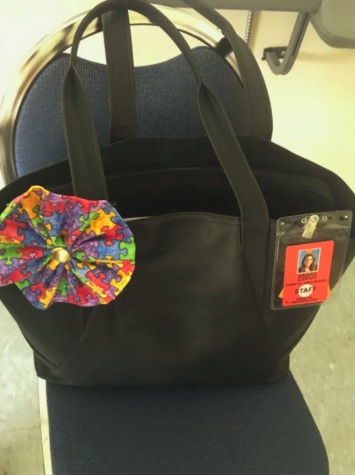

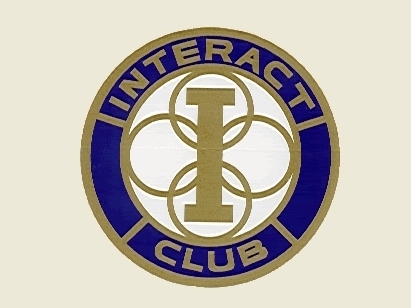
Micaela Leal • Nov 28, 2022 at 10:26 am
While I thought this was a well written set of articles, I wish to express my frustration with the fact that not a single person with autism was interviewed. Plus, the continual use of the puzzle pieces was distressing as an autistic person. The puzzle piece is tied to Autism Speaks. If you wish to use a symbol, turn your attention to the infinity symbol (♾). Gold infinity symbols are the symbols created for autistic people, with rainbow infinity symbols for neurodivergent people as a whole (neurodivergent = someone with something “different” in their brain, like autism, bipolar, schizophrenia, and ADHD). I would have also liked to see someone address why Aspergers is a harmful term. It was created by a n azi who used it to separate the “useful” autistics from the “bad” autists.
Great articles, but very clearly done without a single autistic person giving input or more than surface level research.
Christy Carlson • Apr 18, 2018 at 9:01 pm
As the Mom to a sixteen year old son with Autism, who attends West HS and the co-founder of Just 2 Moms, an Autism Awareness and Acceptance Non-profit in Cherry Hill, all I can say is: Wow! What wonderful articles that cover so many aspects of Autism on personal and academic levels! Eastside has done a wonderful job! Thank you for presenting such comprehensive coverage of Autism, a condition that currently affects 1 in 49 children in NJ.
I encourage anyone who is interested to attend the Special Needs/Circle Club Musical Peter Pan being preformed on Saturday, May 12th, 2018 at West HS.
In addition, Cherry Hill has it’s own inclusive social group for Typical and Special Needs teens, called Teen Scene, which is always seeking teens to participate. Teen Scene offers recreational opportunities for Cherry Hill High School teens with special needs together with their high school peers. Activities include frequent community parties and social get-together’s.
This is a fun opportunity to earn community service credit hours for all students in Cherry Hill!
Hosted by the Ombudsman for Disabled Citizens. Supported by Cherry Hill Alliance on Alcohol & Drug Abuse (Funded by GCADA). Please contact Jill Kail, for more information
JKail@CHTownship.com
Katie Radbill • Apr 17, 2018 at 9:57 pm
Thank you for your comprehensive coverage, Eastside!
As a teacher, I am often touched by how patient our students are with their autisic peers. East is filled with good people who help others to feel welcome.